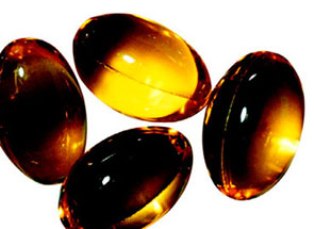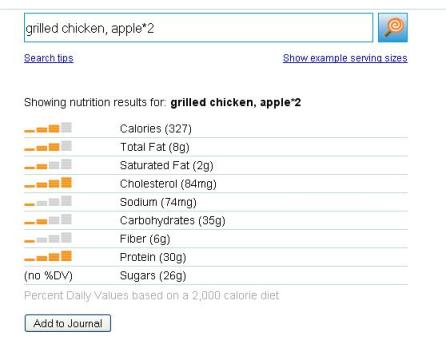December 21st, 2010 by PJSkerrett in Better Health Network, Health Tips, News, Research
1 Comment »

 Like swallows returning to San Juan Capistrano in the spring, Chia Pets begin appearing every December on late-night television and in the gift aisles of many stores. (Full disclaimer: I bought one for the Yankee Swap at Harvard Health Publication’s annual Christmas party.) Water these ceramic figures and they sprout a green “fur” from seeds embedded on the surface. Silly? Sure, that’s why they are such a hit. What you might not know is that the seeds may someday be a real gift for people with diabetes.
Like swallows returning to San Juan Capistrano in the spring, Chia Pets begin appearing every December on late-night television and in the gift aisles of many stores. (Full disclaimer: I bought one for the Yankee Swap at Harvard Health Publication’s annual Christmas party.) Water these ceramic figures and they sprout a green “fur” from seeds embedded on the surface. Silly? Sure, that’s why they are such a hit. What you might not know is that the seeds may someday be a real gift for people with diabetes.
Chia seeds come from a plant formally known as Salvia hispanica, which is a member of the mint family. It gets its common name from the Aztec word “chian,” meaning oily, because the herb’s small, black seeds are rich in oils. It was a staple food for the Aztecs, and legend has it that their runners relied on chia seeds for fuel as they carried messages one hundred or more miles in a day. Chia seeds contain more healthy omega-3 fats and fiber than flax or other grain seeds. They are also a good source of protein and antioxidants. Read more »
*This blog post was originally published at Harvard Health Blog*
December 13th, 2010 by PJSkerrett in Better Health Network, Health Tips, News, Research
No Comments »

 Stroke killed 2,000 fewer Americans in 2008 (the last year with complete numbers) than it did in 2007, the Centers for Disease Control and Prevention (CDC) said yesterday in its latest annual Deaths report. That dropped stroke from the third leading cause of death in the United States to the fourth.
Stroke killed 2,000 fewer Americans in 2008 (the last year with complete numbers) than it did in 2007, the Centers for Disease Control and Prevention (CDC) said yesterday in its latest annual Deaths report. That dropped stroke from the third leading cause of death in the United States to the fourth.
Good news? Yes and no. It’s always good news when fewer people die. The reduction suggests a payoff for efforts to prevent stroke and improve the way doctors treat it.
Yet the drop from third to fourth place is due largely to an accounting change. The CDC reorganized another category, “chronic lower respiratory diseases” (mainly chronic bronchitis and emphysema), to include complications of these diseases such as pneumonia. The change substantially increased the number of deaths in this category, which had long trailed stroke as the fourth leading cause of death.
More worrisome is that the decline in deaths from stroke isn’t matched by a decline in the number of strokes. On the rise since 1988, stroke now strikes almost 800,000 Americans a year, and that is expected to grow. Read more »
*This blog post was originally published at Harvard Health Blog*
December 10th, 2010 by AnnMacDonald in Better Health Network, Health Tips, News, Research
1 Comment »

Only one-third of people with major depression achieve remission after trying one antidepressant. When the first medication doesn’t adequately relieve symptoms, next step options include taking a new drug along with the first, or switching to another drug. With time and persistence, nearly seven in 10 adults with major depression eventually find a treatment that works.
Of course, that also means that the remaining one-third of people with major depression cannot achieve remission even after trying multiple options. Experts are hunting for ways to understand the cause of persistent symptoms. In recent years, one theory in particular has gained traction: that many people with hard-to-treat major depression actually suffer from bipolar disorder. However, a paper published online this week in the Archives of General Psychiatry suggests otherwise — and the findings provide new insights into the nature of treatment-resistant depression. Read more »
*This blog post was originally published at Harvard Health Blog*
November 30th, 2010 by PeterWehrwein in Better Health Network, Health Tips, News, Research
1 Comment »

 Vitamin D has been talked about as the vitamin — the one that might help fend off everything from cancer to heart disease to autoimmune disorders, if only we were to get enough of it.
Vitamin D has been talked about as the vitamin — the one that might help fend off everything from cancer to heart disease to autoimmune disorders, if only we were to get enough of it.
“Whoa!” is the message from a committee of experts assembled by the Institute of Medicine (IOM) to update recommendations for vitamin D (and for calcium).
The IOM committee’s report, released this morning, says evidence for many of the health claims for vitamin D is “inconsistent and/or conflicting or did not demonstrate causality.” The exception is the vitamin’s well-documented (and noncontroversial) benefits on bone growth and maintenance.
The IOM panel’s report also says most North Americans (Canadians as well as Americans) have more than enough vitamin D in their blood to achieve the desired effect on bone. The committee said a blood level of 20 nanograms per milliliter (ng/mL) is sufficient for most people.
The panel set 600 International Units (IU) as the recommended daily intake for children and for adults ages 19 to 70. People ages 71 and older are supposed to get an additional 200 IU, or 800 IU a day.
That’s a fairly sizable increase over the previous recommendations of 200 IU per day through age 50, 400 IU for people ages 51 to 70, and 600 IU for people ages 71 and older. Read more »
*This blog post was originally published at Harvard Health Blog*
November 18th, 2010 by Berci in Better Health Network, Health Tips, News, Research
No Comments »

Although I can check the calorie content of any food on WolframAlpha, it’s good to have a site that focuses only on this issue:
PhotoCalorie is an application inspired by the ideas of Dr. Mark Boguski of Harvard Medical School, who realized that the current methods available to track your daily nutrient intake are monotonous and simply too complicated. As a result, people would lose interest in tracking their diet or stop the diet all together. Our mission is to create the easiest food journal on the planet to help dieters lose weight and monitor their diet with ease.


*This blog post was originally published at ScienceRoll*
 Like swallows returning to San Juan Capistrano in the spring, Chia Pets begin appearing every December on late-night television and in the gift aisles of many stores. (Full disclaimer: I bought one for the Yankee Swap at Harvard Health Publication’s annual Christmas party.) Water these ceramic figures and they sprout a green “fur” from seeds embedded on the surface. Silly? Sure, that’s why they are such a hit. What you might not know is that the seeds may someday be a real gift for people with diabetes.
Like swallows returning to San Juan Capistrano in the spring, Chia Pets begin appearing every December on late-night television and in the gift aisles of many stores. (Full disclaimer: I bought one for the Yankee Swap at Harvard Health Publication’s annual Christmas party.) Water these ceramic figures and they sprout a green “fur” from seeds embedded on the surface. Silly? Sure, that’s why they are such a hit. What you might not know is that the seeds may someday be a real gift for people with diabetes.


 Stroke killed 2,000 fewer Americans in 2008 (the last year with complete numbers) than it did in 2007, the Centers for Disease Control and Prevention (CDC) said yesterday in its latest annual
Stroke killed 2,000 fewer Americans in 2008 (the last year with complete numbers) than it did in 2007, the Centers for Disease Control and Prevention (CDC) said yesterday in its latest annual 











